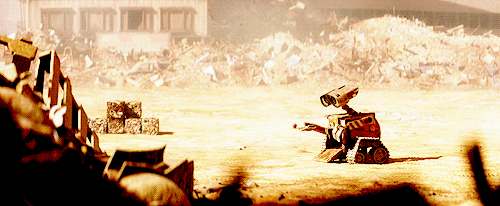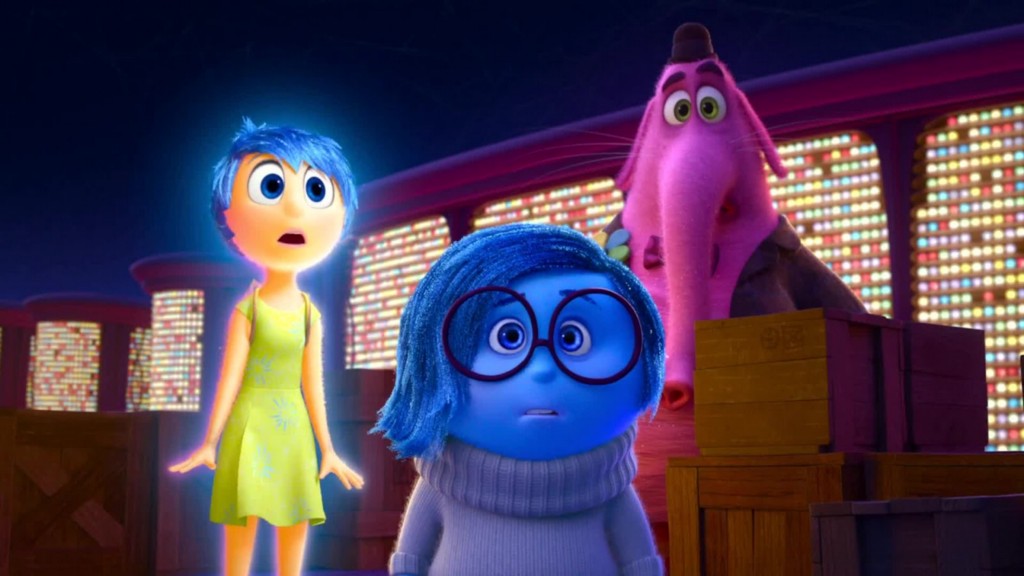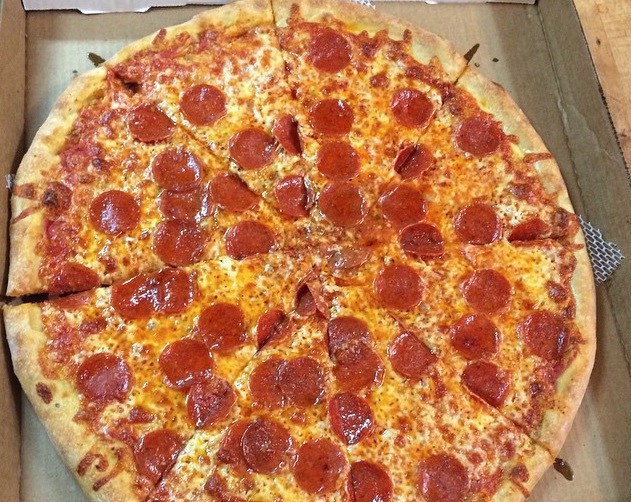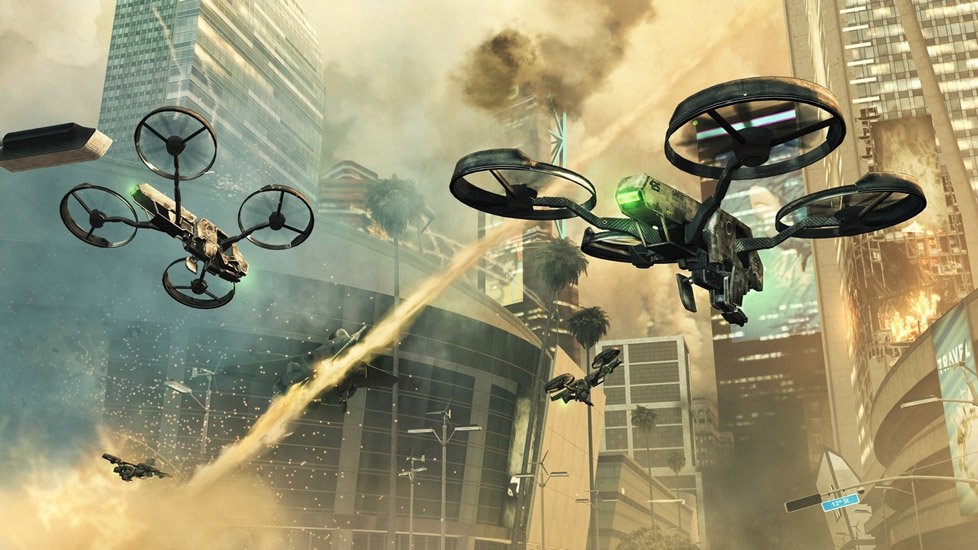The Low-Cost Way To Get Yourself Into (And Out Of) Marriage
“I’ve been married twice, once for three years and the other for five and counting. I spent less than $500 on each wedding, mostly on food. To each, I invited fewer than 20 people. I managed to keep wedding presents down to a useless picnic basket, four soup spoons, and a bottle of wine. I still haven’t been on a honeymoon. Did that make it easier to divorce when I did the first time, and more likely to do it again this time? Probably.”
The "Meal of the Moment"

The “bowl” is the “meal of the moment,” because, as New York’s Robs surmise, “it’s healthful, filling, and infinitely customizable, a blank canvas for inventive chefs and fast-casual chains alike.” It is, in other words, the perfect meal for more perfectly optimized knowledge workers in a less-than-perfectly optimized (yet!) economy, who should be constantly striving for greater productivity, a goal that is wholly incompatible with ceasing work to sleep, eat, or poop.
That is, the bowl is the most perfect meal that so-called white collar workers will accept until, beaten down by ever-increasing productivity demands, they have fully embraced the even more optimized nourishment subroutine of Soylent for all mid-labor nutritional replenishment — which, if it makes them sufficiently efficient, will forestall their total replacement by a machine, which of course doesn’t need to eat anything at all.
Photo by El Rey
The Pixar Theory of Labor
by James Douglas

A lot of Pixar films come packaged with a quasi-humanist narrative hook that enables the public digestion of their work. Viewers nodded thoughtfully over WALL-E’s depiction of a future earth choked by the refuse of big-box retail, and of a human race infantilized and rendered obese by mindless consumption, while Brave was the first Pixar film to feature a female protagonist — a simple gesture, the long-overdueness of which did not do very much to diminish murmurs of appreciation. Pixar’s latest film and fifteenth feature, Inside Out, arrives with at least three female-coded lead roles, and an apparently sincere desire to render with sensitivity the interior life of a young girl.
That interior life is realized as a theme park-esque inner world, surrounding a gleaming control room (“Headquarters”) in which five personified emotions — Joy, the gung-ho leader; Anger; Fear; Disgust; and the little-liked Sadness — each play a role in governing the personality of a human girl, Riley, who is undergoing a traumatic move to San Francisco, where her dad seems to be establishing some sort of tech start-up. When Joy and Sadness are accidentally lost in the outskirts of Riley’s mind, they have to find their way back to Headquarters before her emotional sensibility is destabilized for good.
A lot of narrative business hinges on Joy learning to accept Sadness’s place within the ecosystem of Riley’s mind. Sadness — frumpy, dissolute, low-energy — is a bit of a drag. Her very existence seems contrary to Joy’s key project, which is to ensure Riley is happy all the time; Sadness can’t seem to help turning even Riley’s happy golden memories a glum shade of blue. As per the logic of any buddy comedy, the two eventually learn to get along, and Sadness eventually proves her worth by helping to restore Riley’s emotional equilibrium.
This is another matter of some regard in the public response to Inside Out. With the figure of Sadness, the film appears to permit the existence of negative emotions within a broader portrait of mental health, even to the point of validating depressive feelings. Corporate entertainment — the thinking seems to go — seeks to ensure that its audience is kept mindlessly, vapidly content — but here is an exception, from the House of Mouse, no less. This evidence of humane, even progressive, thinking on the part of its writers and directors helps to contribute to the public perception of Pixar as an enlightened production house — still part of corporate Disney, for sure, but somehow authentic in spite of it. New York Times critic A. O. Scott even compared WALL-E’s vision of a ruined earth to Werner Herzog at his most pessimistic.
It is in the nature of modern capitalism that corporations, especially ones of a certain size and influence, glaze a veneer of enlightenment over a brutal, instrumental value system. This is why Facebook and Google go on worldwide fishing expeditions for new users, but frame it publicly as bringing the internet and opportunity to the developing world; it’s why Whole Foods tells its customers they’re helping to save the planet by buying organically farmed produce, but often neglects to specify how far that produce has been shipped. Pixar has created a stable of films for children that is founded on narratives of self-actualization — of characters branching out, embracing freedom, hitting personal goals, and living their best lives. But this self-actualization is almost exclusively expressed in terms of labor, resulting in a filmography that consistently conflates individual flourishing with the embrace of unremitting work.
Is there any other production house operating today that is more obsessed with narratives of the workplace and employment? The basic Pixar story is that of an individual seeking to establish, refine, or preserve their function as an instrument within a system of labor. The only way Pixar is able to conceptualize a protagonist is to assign them a job (or a conspicuous lack of one) and arrange the mechanisms of plot to ensure that they fulfill that job. This is why Joy can only accept Sadness once she comes to understand what it is she does.
Pixar’s debut film organized a scenario involving sentient toys as a narrative about two men fighting for the same job. In not one but two sequels, it revisited those same characters in a narrative about how bad retirement is, and how awful it is to be made redundant. In Monsters, Inc., it developed a parallel universe populated by monsters and powered by childrens’ screams to tell a story about a workplace duo striving to be the most efficient employees. Up is ultimately a film about how unthinkable it is to retire; even elderly widowers must find a new vocation. In film after film, Pixar presents narratives chiefly concerned with characters trying to be the best at what they do, or otherwise prove their usefulness.
In Finding Nemo and Brave, Pixar even managed to render family dysfunction as something more like a Human Resources issue. Both films represent an emotional crisis between parent and child as a managerial problem: Wayward child Nemo wants to venture out into the Great Barrier Reef, but anxious father Marlin wants to keep him at home; wayward teen Merida want to venture out into the moors of Scotland, but strict mother Elinor wants to keep her in the castle. Each conflict is resolved when the parent witnesses their child’s independent capabilities outside of the domestic sphere. Is there anything about these stories that couldn’t have been short cut by handing both parents this Business Insider article on the “8 Habits of Highly Effective Google Managers”? (“Empower your team and don’t micromanage.”)

It’s possible that Pixar’s obsessiveness about work and employment has somehow been effaced in the public eye by the imaginative diversity of their films’ settings: ant colonies, space, the ocean, a bizarre alternate-world inhabited by sentient vehicles, and so on. But in Inside Out, for the first time, the ground beneath Pixar’s ideological feet comes into view, and it’s the Bay Area, California.
Pixar has been a part of Californian tech culture since 1979, when a group of computer graphics researchers at the New York Institute of Technology — including Edwin Catmull, current president of Pixar and Walt Disney Animation Studios — were poached over to the West Coast by George Lucas. In San Rafael (in the North Bay Region), Catmull headed up Lucasfilm’s Computer Division, which developed hardware and software used to render 3D graphics. Early, proto-Pixar short films — including John Lasseter’s Luxo Jr., the desk lamp protagonist of which became Pixar’s mascot — were made in part to show off the Computer Division’s technology, some of which was marketed to scientific visualization industries, in medicine and geophysics. In 1986, Steve Jobs bought Catmull’s team from Lucas, and it became the independent Pixar Corporation. In the early aughts, having moved from San Rafael to Richmond (in the Eastern Bay region), the company moved again, to new headquarters in Emeryville, Alameda County, on the Bay between Berkeley and Oakland.
As do other tech giants (and the less so), Pixar positions working at the company as something more like a lifestyle choice than mere employment, with a corporate environment that houses a constellation of “perks” geared to ensure maximum employee satisfaction. On a visit to the Emeryville campus for a company profile for the New Yorker, Anthony Lane describes a weights room, cardio room, massage room, breathing room, free cereal bar, and two secret cubby holes, Lucky 7 and the Love Lounge, which are accessible through a passage concealed by a bookcase and a mini door that visitors must crawl through, respectively. Headquarters also house Pixar University, where employees can take courses in filmmaking and other skills. “Why are we teaching filmmaking to accountants?” is the rhetorical question former Pixar University head Randy Nelson poses to Lane. “[I]f you treat accountants like accountants, they’re going to act like accountants.” Accountants must not act like accountants; Pixar expects its employees to not merely deliver on the jobs they have been contracted for, but also to provide something more.
This excess, epitomized as the complete entanglement of an individual’s private life with their employment, is at the core of Pixar’s conceptualization of what it is to be a person: In every Pixar film, the protagonist’s arc is oriented toward the ultimate goal of being an efficient, productive worker — whether employment has been thematized as being a father, princess, robot janitor, toy, ant colonist, harvester of screams, adventurer in South America, or otherwise. For Pixar, to live is to work. Cars is a film about an ambitious racecar who is forced to chill out and not be so competitive, except he really just learns that chilling out and not being so competitive is the key to being an even better competitor. This is coming from a workplace culture that, under the guise of compassion, has erased the distinction between free time and labor time, and expects their employees not to notice that they working that much harder. After all, free cereal! That means you can start work early enough for breakfast. In his New Yorker piece, Lane talks with voice actor John Ratzenberger, who remarks on the company’s “get up and go to work” ethos. “They really should be running Western civilization,” Ratzenberger says, a sentiment that scans as amusing at first and then sort of sinister.
One highly touted aspect of Pixar’s production process is the role of the “braintrust” in workshopping the development of their films. This method (described by Catmull here) has its origins in the making of their first feature Toy Story, where director John Lasseter enjoyed a close creative collaboration with later Pixar directors Andrew Stanton, Lee Unkrich, Pete Docter, and Joe Ranft. The idea is that the key creative personnel on any given project must periodically submit to a group critique that unpacks and examines elements of the story under construction. This process is said to ensure the quality of Pixar’s films, but it also has resulted in a series of films that each toe the party line, values-wise. The pressures of this narrative-by-committee process probably account for why so many Pixar stories wind up in the same place: a garbage heap.
In WALL-E, the close of the second acts finds the film’s robotic protagonist tossed down into a garbage disposal vault in the bowels of the spaceship Axiom, where larger-model robots collect the waste to be released into space. Toy Story 3 reaches an emotional peak at a suburban landfill, where Woody, Buzz and their fellows toys face down a violent death by incinerator. In Inside Out, right on cue at the close of act two, Joy is temporarily stuck in a Memory Dump — a pit of discarded memories, jettisoned as Riley grew up. Pixar conceptualizes death not as the end of existence per se, but as the state of becoming waste. Waste does not work. Waste does not have a function. Waste is obsolete. Waste is undifferentiated. For Pixar, the model individual represents usefulness in their own unique way. A virtuous accountant can’t just be like all the other accountants — they have to be their own special kind, they have to be the lead in their own story.
At its bottom, this is the logic of pure capitalism. In an economy structured around limitless growth, dynamism must become the natural state of things. Idle capital is unproductive capital and an unproductive worker is a waste of resources. The virtuous citizen cannot only consume but must produce, an imperative that finds its current (and particularly American) incarnation in the entrepreneur, the boot-strapper, the rags-to-riches hero, who is too busy pulling themselves up by their laces to notice that there’s no top to reach. The natural and profitable ideological by-product of this fixation is an abhorrence of collectivism — and therefore organized labor. To be collective, to be one among many, is to no longer be a special individual producer, which is its own kind of death. This is why Toy Story 2 abhors the idea of Woody becoming part of a box set.
With Inside Out, Pixar offers audiences the closest thing yet to a real world version of the stresses that accompany their protagonists’ fixation on work. Riley’s dad uproots his family from a comfortable middle-class existence in Minnesota and moves them to San Francisco for his startup, because that’s where the industry is. While there, he spends little time with his family, but is constantly running business on his phone, or heading off on errands. Riley is isolated from her friends, and has difficulty pursuing her normal physical activities. Meanwhile, the family’s possessions have been delayed by a wayward moving company. Although he causes all this, and at no small cost to his daughter’s mental health, Riley’s dad is not depicted as a villain. He loves his family, they love him, and together they work through the deprivations caused by the move. The narrative does nothing to condemn this state of affairs; indeed, it is Riley’s burden to accept them. Inside Out suggests that accommodating the pressures of capitalism is simply part of growing up.
Growing up is exactly what Pixar’s audience is doing. The generation of tech developers that came up idolizing Steve Jobs probably didn’t notice that when their parents tucked them into their Buzz and Woody sheet-set at night that they were sleeping in Jobs’ by-product. Pretty soon, that generation’s children will be ready to throw away their Lightning McQueen pajamas and get their own seed funding.
What Dumbass Problem Are America's Most Annoying Parents Worrying About Now?
“Some parents have responded to the Atticus news by questioning the author’s intent: Nearly 60 years after writing the book, did Ms. Lee truly want it published? Others have taken comfort in the fact that ‘Watchman’ is said to have been written before ‘Mockingbird,’ and so it was a draft, they say, not the evolution of their cherished Atticus. But there are those who worry that the book will prompt an unfortunate questioning of their children in the future: Which Atticus were you named for?”
The Awl: A Podcast

We’re trying something new, and it is a podcast. (Websites are legally required to have podcasts in 2015.) We’re interviewing people we like, people who’ve written interesting things, people who’ve done interesting things, and people who are willing to show up to record.
The first guest is Jenna Wortham, a staff writer at the New York Times Magazine. We’re talking about… Instagram? Travel? We cover a lot of ground. She’s great!
How to listen:
Subscribe in iTunes
The podcast page
Soundcloud
The RSS feed
We’ve submitted to iTunes, we’ll see what happens there. Maybe they’ll reject us! Who knows (Update: here we are.) The first episode is a mess. Go easy!
Our sponsor is the delicious Williamsburg Pizza.
Tubby Cartoon Characters Are Making Our Children Fat: Study
“University of Colorado Boulder researchers found that children consume more low-nutrition, high-calorie food such as cookies and candy after observing plump cartoon models. Investigators believe the findings show that kids are responsive to the apparent body weight of cartoon characters like the aptly named Grimace, a rotund, milkshake-loving creature created by McDonald’s restaurant in the 1970s. Children tend to perceive ovoid, or egg-shaped, characters as overweight even though the creatures are imaginary, found the study.”
Life Is But a Drone

The thrust of this Times’ piece on drone operator burnout is twofold: That drone operators, contrary to popular belief, endure as much stress as their traditionally deployed counterparts — if not more, because their war is effectively unending, and they must toggle between their “war face” and domestic life on a daily basis — and that the resulting attrition is diminishing the Air Force’s ability to wage drone warfare.
Some top Pentagon officials had hoped to continue increasing the number of daily drone flights to more than 70. But Defense Secretary Ashton B. Carter recently signed off on the cuts after it became apparent that the system was at the breaking point, Air Force officials said.
The biggest problem is that a significant number of the 1,200 pilots are completing their obligation to the Air Force and are opting to leave. In a recent interview, Colonel Cluff said that many feel “undermanned and overworked,” sapped by alternating day and night shifts with little chance for academic breaks or promotion.
At the same time, a training program is producing only about half of the new pilots that the service needs because the Air Force had to reassign instructors to the flight line to expand the number of flights over the past few years.
This can be read a different way, though, as if the Air Force were any other transit company that makes a large number and growing number of trips a day, and is acutely feeling the limits of its human workforce:
Some top [transportation company] officials had hoped to continue increasing the number of daily [trips] to more than [large number]. But [the CEO] recently signed off on the cuts after it became apparent that the system was at the breaking point, officials said. The biggest problem is that a significant number of the [pilots/drivers] are completing their obligation to the [company] and are opting to leave. In a recent interview, [executive] said that many feel “undermanned and overworked,” sapped by alternating day and night shifts with little chance for academic breaks or promotion. At the same time, a training program is producing only about half of the new [pilots/drivers] that the service needs because the [company] had to reassign instructors to the line to expand the number of [trips] over the past few years.
If only there were some way to produce an unlimited number of pilots that never get stressed out, never need to take break, never need a promotion, and will never quit, but keep doing the same thing, day in and day out, their accuracy and sense of mission never diminished by fatigue or boredom or guilt or existential crisis.
"It's funnelled hole suggests terrible uses"
“I crack two whole eggs into the hot tunnel, trying to ignore the gurgling sound from within. It’s impossible to see what’s going on — but it smells bad. I squint into the dark opening. A bulging yellow sac peers back at me. Minutes pass; the smell does not. Then, without warning, a flaccid, spongy log half jumps from the machine, writhing like an alien parasite in search of a host body.”
— Deep within the Internet’s 24-hour garbage buffet, Rhik Samadder’s kitchen gadget column is one of the few good things on offer.
Meg Baird, "Even the Walls Don't Want You To Go"
I don’t know anything about this song or what its lyrics are saying and on reflection I have decided that I am going to keep it that way; it’s so pretty and perfect and magically pitched between “cleansing breath” and “quiet heartbreak” that learning a little more might ruin the entire effect it has on me. Of course if you feel differently you can probably find out whatever you need to know here. I’m just going to stay in my quiet place and enjoy.
de Blasio Covers The Bases
Mayor de Blasio: “I want to use a phrase that we did not hear as much in all the discourse, but we should say it because it’s evident tonight: all lives matter. All lives matter. And because we are grappling with the challenging past, it’s also important to say again a phrase that should be self-evident, it should not need to be said. But until we make more progress, we will say it again: black lives matter. Also, we should say, blue lives matter. What else? Red, orange and yellow lives matter. Green lives. Blue — well, I’ve done that one already. What are the others? Oh, right, indigo, indigo lives matter for sure. And of course violet lives. Violet lives matter. They all matter.”
